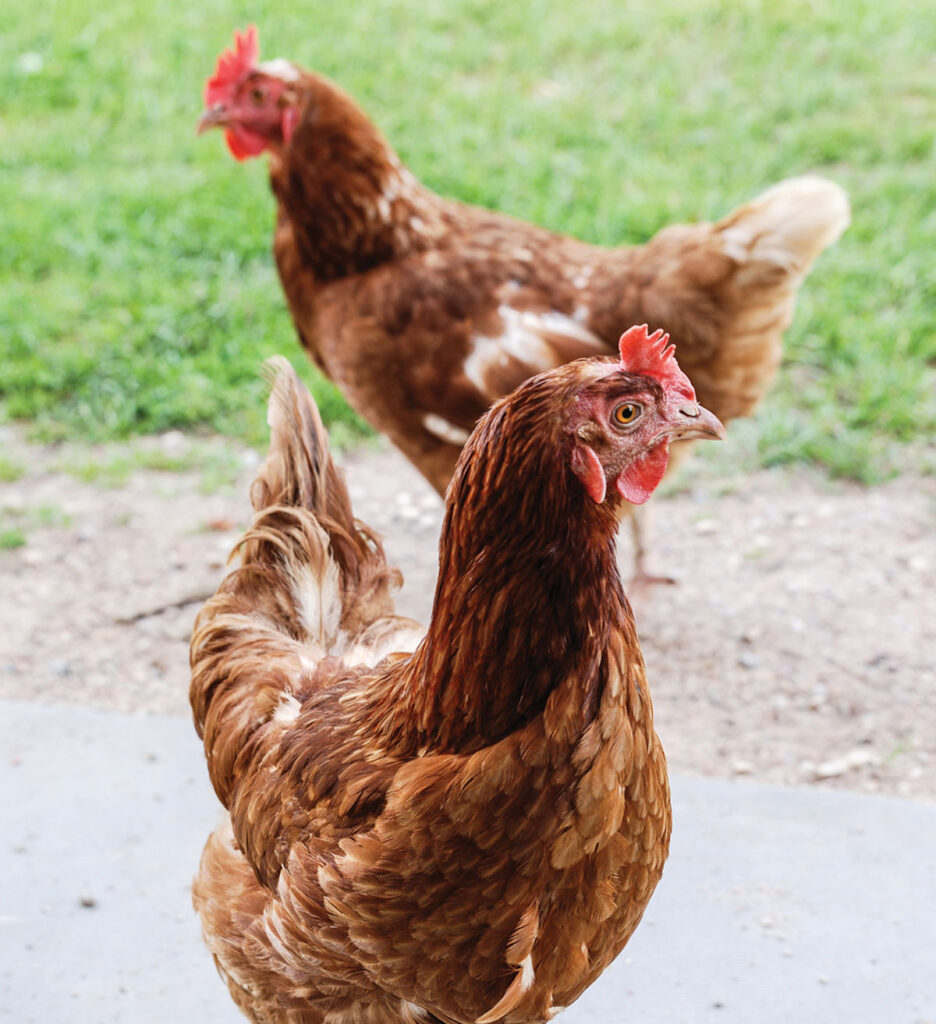
Diet and light can deter the costly behavior
Pecking and cannibalism among chicken and turkey flocks could be an expensive problem for farmers without the correct preventative measures. Birds with high stress and fear levels, dam-aged feathers and skin increase economic costs and reduce production efficiency.
In the Merck Veterinary Manual, Dr. Fredric J. Hoer said crowding, light intensity and poor nutrition are reasons why pecking and cannibalism occurs. Feed management, light management and environmental enrichment could reduce and prevent this issue.
According to Phillip J. Clauer, Virginia Cooperative Extension poultry specialist, due to the numerous reasons for cannibalism outbreaks, it is very important that cannibalism control be a part of every producer’s management program.
“If a chicken should sustain a penetrating wound through the skin, where there is some bleeding, other chickens in the flock will gather around and incessantly peck at the would until it becomes larger and larger to the point of death,” said Terry Conger, veterinary medical officer of Benton and Washington counties in Arkansas.
Poultry producers must consider the pecking order when managing flocks. Stronger, more aggressive birds will start pecking at the weaker or injured birds.
Cannibalism is essentially impossible to stop once it has started.
Low fiber diets, lack of protein and other nutrients may cause the birds to start pecking. For smaller flocks, feeding large handfuls of fresh greens, like clover grass or weeds could help keep birds busy. For larger producers, finding feeds with higher fiber percentages will keep them more content.
The absence of feed and water could also cause birds to compete for their food, making them more aggressive toward each other. Ensuring that the birds have free access to water and food at all times is important according to Clauer.
“Photoperiod is extremely important for layers as it stimulates growth, development and re-productions, and thus, egg production,” said Weimer. “Light type, intensity and wavelength also affect bird productivity and welfare.”
Using 15-to-25-watt lights and avoiding excessively long periods of light will decrease the likelihood of harmful pecking. Weimer added proper facility management and enriching environments keep birds content and busy, ensuring less aggression.
Environment is detrimental to the wellbeing and productivity of poultry flocks. Producers must maintain proper stocking density, equipment, diet formulation, water quality, litter quality, biosecurity and air quality, according to Wiemer.
Another method to prevent pecking and cannibalism is beak trimming. Trimming the tip of the beak provides a square tip, making the risk for injuries less likely. This process must be done when the chick is 10 days old or younger.
“If the pointed end of the beak is blunt, [pecking and cannibalism] won’t happen,” Conger said.
If a producer observes pecking and cannibalism, it is important to separate the weaker or injured birds. Applying anti-pecking ointment to wounds could also help prevent further damage.
Pecking and cannibalism in poultry flocks could be a costly welfare issue that can be avoided if proper management practices are used.
“Don’t take chances,” said Clauer. “Make cannibalism control a part of your management program and you will save a great deal of time and money.”




